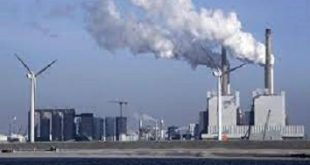Sweden, one of the wealthiest countries in Europe, is nonetheless a shining example of stability and creativity. It must, like many other nations, delicately strike a balance between social cohesiveness, environmental sustainability, and economic progress. Sweden’s 2024 attitude to these concerns will determine how the country develops.
Economic Development in a Changing Environment
Sweden’s economy has proven resilient, and 2.5% GDP growth is anticipated by 2024. This expansion follows a difficult but successful recovery from the COVID-19 epidemic, which was made possible by the government’s astute fiscal management and extensive social safety nets.
Technology companies are still a major source of growth. Known as the “Unicorn Factory,” Stockholm continues to be a global centre for tech startups, with leaders in the space like Northvolt, Klarna, and Spotify. Sweden has remained at the forefront of technical breakthroughs thanks to its emphasis on innovation, which is bolstered by a workforce with a solid education and a strong dedication to research and development.
Concerns about rising inflation, which is expected to reach 3.8% in the middle of 2024, are dampening this expansion. Policymakers and consumers alike are concerned about the increase, which is being caused by interruptions in the global supply chain and increases in energy prices. In response, the Swedish Central Bank, Riksbank, raised interest rates. This move was intended to reduce inflation, but it also ran the risk of decelerating economic expansion.
Ecological Sustainability: A Two-Sided Sword
Sweden has always been at the forefront of environmental sustainability, and its bold plans to achieve carbon neutrality by 2045 reflect this. The nation is making considerable expenditures in renewable energy sources like hydropower, solar electricity, and wind energy as part of its ongoing energy shift. Over 60% of Sweden’s electricity came from renewable sources in 2023, a percentage that highlights the country’s resolve to lowering its carbon footprint.
This shift is not without difficulties, though. There are worries regarding energy stability due to the national grid’s pressure caused by the quick transition to renewable energy, particularly during the hard winter months when demand rises. Furthermore, discussions on land use have been triggered by the push for green energy, especially in regard to wind farms and their effects on nearby towns and ecosystems.

Another divisive choice made by the government was to gradually phase out nuclear power, which presently produces around 30% of the nation’s electricity. Some claim that cutting nuclear power too soon will undermine the core objectives of the green transition by causing short-term energy shortages and a greater reliance on fossil fuels.
Social Unity in a Changing Community
Sweden’s national identity has been largely shaped by its social model, which is marked by high levels of equality and welfare. But the nation is facing social issues that put this cohesiveness in jeopardy.
The integration and immigration challenges are among the most urgent ones. With one of the highest per capita rates of asylum applicants in Europe, Sweden’s immigration policy has drawn praise as well as criticism. Although a lot of Swedes take great pleasure in their nation’s humanitarianism and openness, the immigration wave has put a pressure on public services including housing, healthcare, and education.
In other localities, tensions have also grown, which has resulted in an increase in far-right attitude and a widening gap between urban and rural areas. The Swedish government has put in place a number of integration initiatives that prioritise education, job prospects, and language proficiency. These initiatives have not, however, been entirely successful; immigrant unemployment rates continue to be higher than the national norm.
With the rise of the Sweden Democrats, a right-wing populist group that has tapped into worries about immigration and national identity, the political environment is also changing. The Sweden Democrats’ rise to the third position in the Riksdag during the parliamentary elections of 2022 signalled a dramatic change in the political landscape of Sweden. The argument over immigration and integration is predicted to heat up as the 2026 elections draw near, further dividing the public.
Sweden’s Position in the World
Sweden is a powerhouse when it comes to international affairs. Sweden is an important player in determining EU policy as a member, especially in regards to digital innovation, human rights, and climate change. Due to its dedication to diplomacy and multilateralism, the nation is now a major actor in international efforts to resolve conflicts and handle issues like climate change.
Debatable has been Sweden’s membership in NATO, particularly in light of the heightened tensions with Russia. Sweden has always been neutral, but in light of growing worries about regional security, especially in the wake of the annexation of Crimea in 2014, it has been more cooperative with NATO. Sweden formally joined NATO in 2023, a decision that elicited conflicting responses at home. While some claim that Sweden’s membership in NATO improves security, others worry that it may raise military tensions in the area.
Gazing Ahead: The Way Ahead
The government of Sweden must balance social and environmental concerns with economic growth as it negotiates these intricate challenges. The administration of Prime Minister Ulf Kristersson has promised to keep placing a high priority on social welfare, innovation, and sustainability. But striking a balance between these priorities will need for thorough preparation, bipartisan cooperation, and the flexibility to adjust to evolving conditions.





